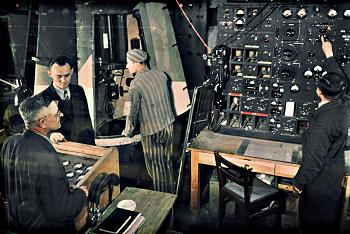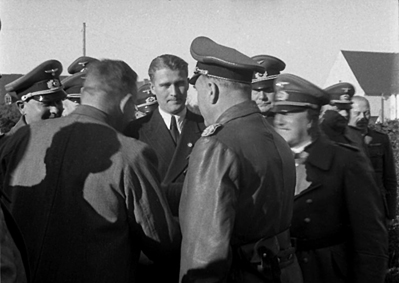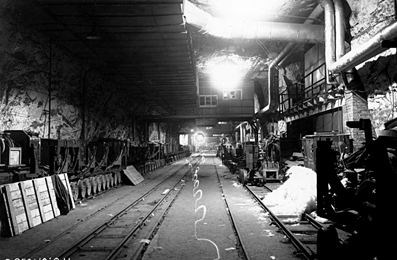Engineers
In the last two years of World War II, the German engineers created the world’s first ballistic missile. They also became participants in the Nazi dictatorship’s forced labor system. After the war, Wernher von Braun and his fellow engineers tried to separate themselves from forced labor. Memoirs and interviews described their superb technical achievements, idealized work at Peenemünde, and described it as technical, autonomous, and apolitical. They suppressed how they used forced labor at Peenemünde and initially ignored the use of concentration camp prisoners for V–2 production at Dora. After the story of Dora became better known, they claimed a status of victims of the Third Reich and blamed forced labor on Hitler, Himmler, and the SS.
However, historians in the last thirty years have discovered written evidence linking the engineers to forced labor. Faced with shortages of labor, Arthur Rudolph, the chief V–2 production engineer, in a memo of April 12, 1943, recommended that the missile program at Peenemünde adopt the exploitation of SS camp labor like that he saw at an aircraft factory. The first prisoners arrived at Peenemünde on June 17. Following the Royal Air Force bombing of the site, von Braun, technical director of the V–2 project, chaired a staff meeting on August 25 that recommended producing missiles underground with camp labor.
Rudolph became technical head of V–2 production at the underground Mittelwerk factory; he and von Braun requested that the SS provide more prisoners for V–2 production, most clearly in an August 15, 1944, memo in which von Braun described his trip to the Buchenwald concentration camp to select prison workers and arrange their transfer to Dora. Missile engineers at Peenemünde adapted the V–2 design for assembly by prison laborers. At Dora, Rudolph and other engineers, who had responsibility for the pace and quality of V–2 assembly, were implicated in prisoner abuse and hangings in reporting ”saboteurs“ to the SS for punishment, as a June 22, 1944 Mittelwerk memo mandated.
Despite the complicity of some engineers, the United States did not include the engineers in the 1947 Nordhausen trial or any other war crimes trials. As later US citizens, von Braun and Rudolph later earned awards for work on the Saturn V launch vehicle that took men to the moon. Other than occasional unverified allegations, Wernher von Braun escaped repercussions for his role in slave labor, but following an investigation by the US Department of Justice, in 1984 Rudolph voluntarily agreed to renounce his US citizenship and moved to Germany.
Wernher von Braun
- Excerpts from Academic Historian Dr. Michael Neufeld’s Critically–Acclaimed Biography, Von Braun: Dreamer of Space, Engineer of War, on PBS Nova Website
- Biographical Information, Including Audio Clips of von Braun Discussing his Background
- Wernher von Braun Portal on Marshall Space Flight Center History Office Website, Links to a Biography, Interviews, Photo Gallery, and Publications (does not refer to Mittelbau–Dora)
- FBI Freedom of Information Act Background Check Files on von Braun
- Biography of von Braun by Journalist Bob Ward, With Favorable Interpretation of his Involvement with Slave Labor in Chapter Six
- Discussion and Debate of Documentation Detailing von Braun’s Participation in Procuring Slave Laborers for V–2 Work at Mittelbau–Dora, as part of National Public Radio Morning Edition Story on Dora from December 3, 1998
Arthur Rudolph
- Artwork Created by Prisoner-Survivors
- Wikipedia Biography on Arthur Rudolph (This is the best biography available online, though readers are cautioned to approach this as all Wikipedia entries with caution.)
- FBI Freedom of Information Act Background Check Files on Rudolph
- Linda Hunt, an American journalist and former executive producer of CNN’s investigative unit connects Rudolph and the Nazi Past to the US Space Program
- Biography of Wernher von Braun by Journalist Bob Ward, With Favorable Interpretation of his and Rudolph’s Involvement with Slave Labor in Chapter Five




